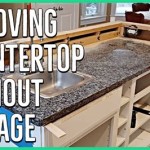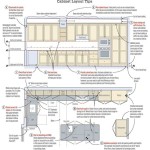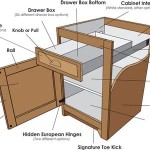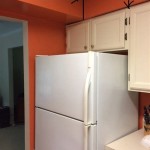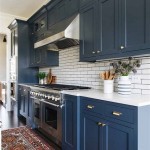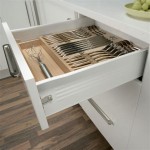1960 Kitchen Cabinets Design Images: A Glimpse into Mid-Century Modern Kitchens
The 1960s marked a significant shift in kitchen design, embracing the sleek lines and functional aesthetics of the Mid-Century Modern movement. Images from this era offer a wealth of inspiration for homeowners seeking to recreate the retro charm or incorporate elements of this iconic style into contemporary kitchen renovations. This article explores the prevalent design features captured in 1960s kitchen cabinet images, providing insights into the materials, colors, and overall aesthetic that defined the decade.
Distinctive Materials and Finishes
Wood was the dominant material for kitchen cabinets in the 1960s. Common choices included walnut, teak, and birch, often showcasing the natural wood grain. These cabinets frequently featured simple, slab-style doors with minimal ornamentation. Painted cabinets were also popular, often in pastel shades such as turquoise, yellow, and pink, adding a touch of playful color to the kitchen. Laminate surfaces, valued for their durability and affordability, also became increasingly common during this period, frequently mimicking wood grain or featuring solid colors.
Metal played a supporting role, primarily used for hardware and accents. Chrome handles and pulls, showcasing clean lines and geometric shapes, were a hallmark of the mid-century modern aesthetic. Steel legs on cabinets and islands contributed to the airy and open feel that characterized many 1960s kitchens.
Color Palettes of the Era
The 1960s embraced a wide range of color palettes in kitchen design. Warm, earthy tones like avocado green, harvest gold, and burnt orange were particularly prevalent, reflecting the broader trend of bringing nature indoors. These colors were frequently paired with contrasting neutrals such as white or beige to create a balanced and visually appealing space. Images from this era also showcase kitchens with bolder color choices, including vibrant shades of turquoise, sunshine yellow, and poppy red, often used as accents to create a lively and energetic atmosphere.
The use of contrasting colors was a defining characteristic of 1960s kitchen design. For instance, dark wood cabinets might be paired with white countertops and pastel-colored appliances, creating a dynamic visual interplay. This emphasis on contrasting colors added depth and personality to the kitchen space.
Cabinet Styles and Configurations
Functionality was a key consideration in 1960s kitchen design. Cabinets were often designed with built-in features to maximize storage and streamline workflow. Images from this period frequently depict pull-out drawers, spice racks, and specialized compartments for storing baking sheets and other kitchen essentials. The layouts often incorporated open shelving or glass-fronted cabinets, allowing homeowners to display colorful dishware and glassware.
Emphasis on Openness and Light
Many 1960s kitchens featured open floor plans, connecting the kitchen to the dining or living area. This created a sense of spaciousness and encouraged social interaction while cooking and entertaining. Large windows were also common, maximizing natural light and further enhancing the feeling of openness. The use of light-colored cabinets and countertops contributed to a brighter and airier atmosphere.
Influence of Space-Age Design
The 1960s witnessed the dawn of the Space Age, and this futuristic sensibility influenced various aspects of design, including kitchens. Images from this era sometimes showcase sleek, streamlined cabinets with rounded corners, reminiscent of spacecraft. The use of new materials like laminate and the incorporation of innovative storage solutions also reflected the forward-thinking spirit of the time.
Integration of Appliances
Appliances became increasingly integrated into the kitchen design during the 1960s. Built-in ovens and cooktops were becoming more common, creating a seamless and cohesive look. Refrigerators often matched the cabinetry, either through paneling or by being manufactured in colors that coordinated with popular cabinet hues. This integration of appliances contributed to the overall streamlined and efficient aesthetic of the 1960s kitchen.
Impact of Pop Culture
The vibrant pop culture of the 1960s also left its mark on kitchen design. Bold patterns and geometric shapes, inspired by the Op Art movement, occasionally appeared in wallpaper, backsplashes, and even cabinet fronts. The playful and optimistic spirit of the era was reflected in the colorful and sometimes unconventional design choices found in many 1960s kitchens.
Studying images of 1960s kitchen cabinets offers valuable insights into the design trends of the era. From the use of natural wood and vibrant colors to the emphasis on functionality and open floor plans, these kitchens showcase a unique blend of style and practicality that continues to inspire contemporary kitchen design today.

1960 S Kitchen Remodel Plans The Stonybrook House

1960 S Kitchen Remodel Plans The Stonybrook House

Updated 1960 S Kitchen Reveal Little Vintage Cottage
1960s Kitchens From Jet Age To Funkadelic

Flip House 1960s Kitchen Before And After A Major Renovation Ranch Remodel Inexpensive Cost
1960s Kitchens From Jet Age To Funkadelic

Decorating A 1960s Kitchen 21 Photos With Even More Ideas From 1962 Kitchens Retro Renovation

1960s Kitchen Remodel Design

Decorating A 1960s Kitchen 21 Photos With Even More Ideas From 1962 Kitchens Retro Renovation
:strip_icc()/264137956_226851966251099_7445829494357355390_n-0caf797b754f411e852154344659431f.jpg?strip=all)
14 1960s Kitchen Ideas We Still Love Today
Related Posts

